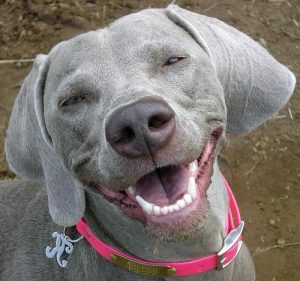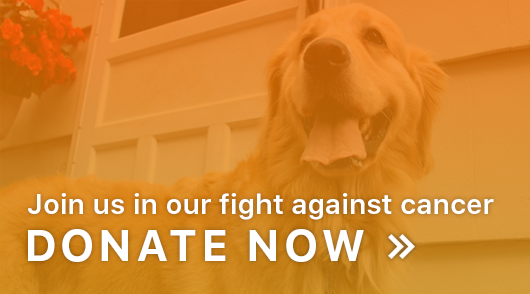
Your dog has a mouthful of teeth (hopefully), but they don’t look much like yours at all. Have you ever wondered about them?
5 fun facts about your dog’s teeth
- They have two sets, just like we do — Young humans have baby teeth; young dogs have puppy teeth. Known as deciduous or milk teeth, puppy teeth begin making way for adult teeth at around 4 months of age. The first set of teeth become loose and eventually fall out, and the roots are absorbed into the gums. The process is complete at around 6 months — much quicker than the rate at which human baby teeth fall out and are replaced with permanent teeth.
- They have lots more permanent teeth than we do — Interestingly, there are only 28 puppy teeth, but 42 adult teeth in dogs. Humans have 32; cats have 30. Adult teeth in dogs actually begin to form before birth and erupt into their assigned positions as the puppy teeth “exfoliate” or fall out.
- They are the teeth of a carnivore — As I’m sure you’ve noticed, the size and shape of your dog’s teeth are very different from your own. Incisors are the teeth in the very front of the mouth; vegan animals have big front teeth (think rabbits and horses) for grasping grasses and carnivores have tiny front rows of teeth (think cats and dogs).
The most obvious teeth in the front of your dog’s mouth are the large canines, which are long and pointy and perfect for grasping, lifting, tearing and if necessary, for defense. Further back are the large carnassial teeth, designed to shear against one another to slice things. Human teeth, on the other hand, are designed more for grinding against one another to chew food.
- The roots of dog teeth are somewhat different from human tooth roots — The roots of dogs’ teeth are similar to ours, except the three upper molars have two roots, and the two lower molars have three roots. And the roots of dogs’ teeth are surprisingly long. The part of each tooth you can see above the gum is only about one-third the length of the entire tooth including the root. In the case of the incisors, what you can see is only about a quarter of the full length of the tooth including the root.
- They almost never develop cavities — Dogs rarely get cavities because not only do they not consume as much sugar as we do, but the species of bacteria that causes cavities are almost never found in dogs’ mouths. In addition, cavities tend to occur on the flat surfaces of teeth, and dogs don’t have teeth with flat surfaces (because they aren’t grinding grains and grasses).
5 tips to keep your dog’s teeth clean and his mouth healthy
- Feed a nutritionally balanced, species-appropriate, fresh food diet, and feed it raw if possible. When your dog gnaws on raw meat, it acts as a kind of natural toothbrush and dental floss.
- Offer recreational bones and/or a fully digestible, high-quality dental dog chew to help control plaque and tartar. The effect of dental chews is similar to raw bones, but safer for power chewers or dogs that have restorative dental work and can’t chew raw bones.
- Brush your pet’s teeth, preferably every day. If every day is too tall an order, commit to do it several times a week. A little time spent each day brushing your dog’s teeth can reap tremendous rewards in terms of his oral health and overall well-being. When plaque isn’t removed from your dog’s teeth, it collects there and around the gum line and within a few days hardens into tartar. Tartar sticks to the teeth and ultimately irritates the gums. Irritated gums become inflamed — a condition known as gingivitis.
If your dog has gingivitis, the gums will be red rather than pink and his breath may be noticeably stinky. If the tartar isn’t removed, it will build up under the gums, eventually causing them to pull away from the teeth. This creates small pockets in the gum tissue that become repositories for additional bacteria.
At this stage, your pet has developed an irreversible condition, periodontal disease, which causes considerable pain and can result in abscesses, infections, loose teeth and bone loss. How quickly this process takes place in your dog’s mouth depends on a number of factors, including his age, overall health, diet, breed, genetics and the frequency and quality of dental care he receives.
- Perform routine mouth inspections. Your dog should allow you to open his mouth, look inside and feel around for loose teeth or unusual lumps or bumps on the tongue, under the tongue, along the gum line and on the roof of his mouth. After you do this a few times, you’ll become aware of any changes that occur from one inspection to the next. You should also make note of any differences in the smell of your dog’s breath that aren’t diet-related.
- Arrange for regular oral exams performed by your veterinarian. He or she will alert you to any existing or potential problems in your pet’s mouth, and recommend professional teeth cleaning under anesthesia, if necessary.
If you’re vigilant about your dog’s dental home care and he doesn’t have any special situations that predispose him to tartar buildup or other dental issues, he may never need a professional cleaning by a veterinarian. However, pets with extreme tartar buildup, badly inflamed gums or oral infections need extra help.
Analysis by Dr. Karen Shaw Becker








